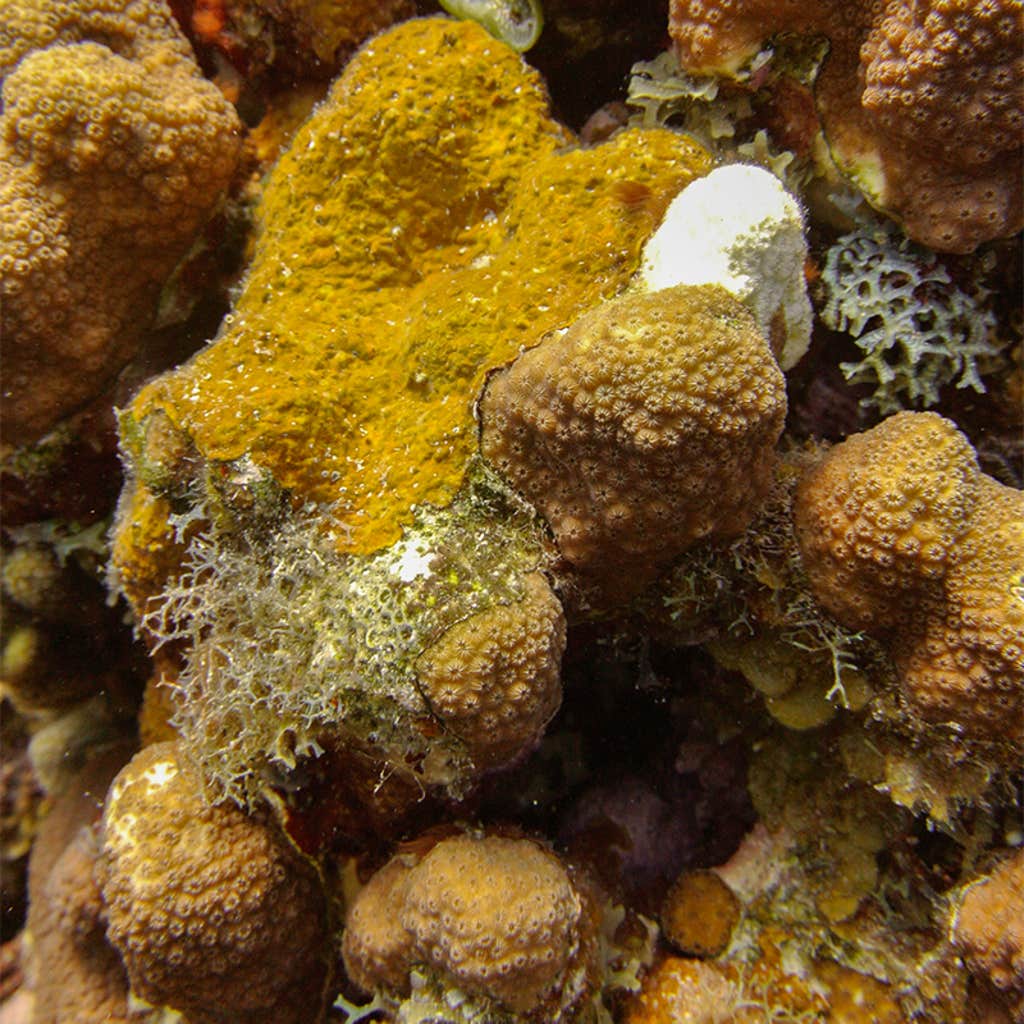Coral reefs, currently amongst the most threatened communities in the world, deal with a fatal brand-new risk– one that many scuba divers and researchers have actually missed out on. Damaging algal crusts referred to as PACs have actually obviously been spreading out unnoticed throughout shallow tropical reefs for years.
“Everywhere that we see a PAC, corals can not get a footing,” states Bryan Wilson, a coral biologist from the University of Oxford and co-author of a brand-new paper that information the damage PACs can do to reefs– and the unexpected degree of the killers’ variety.
These PACs, or peyssonnelid algal crusts, now mask big swaths of reef throughout the Caribbean and Indo-Pacific. In St. John in the U.S. Virgin Islands, for instance, they cover to 64 percent of the seafloor in shallow waters. The research study website in St. John has actually been surveyed for 35 years now, PACs just captured the eye of Wilson’s associate and co-author Peter Edmunds a years earlier. The algae were missed out on since they are hard to properly determine and are typically misclassified. PACs were just not on scuba diver study lists and were simple to overlook.

Image by Peter Edmunds.
To an experienced scuba diver surveying a reef, a PAC might appear like a fragile carpet with wart-like protrusions. These algal crusts been available in a range of tones– from golden to red to black– however they can quickly be misinterpreted for other sort of algae, and with a cleaning of sand, they might be puzzled for a non-living element of the seascape. Tom Schils from the University of Guam, likewise a co-author on the paper, states even the classification “PAC” is brand-new, organizing together a great deal of crust-forming types of red algae from the order Peyssonneliales
“Some PAC types have a broad variety and can act in a comparable style environmentally in extremely unique parts of the world,” Schils discusses. They are likewise much more typical than researchers recognized.
Following a damaging occasion like a cyclone, PACs grow, rapidly spreading out into a thick covering along the seafloor, which then actively discourages coral larvae from landing and beginning a brand-new nest. PACs likewise disrupt algae and bacterial types that aid healthy coral larvae discover preferable areas to settle, in addition to get the nutrients they require and defend against illness. Where to settle is a crucial choice, considering that corals can, under the best conditions, reside in their watery communities for centuries. The working hypothesis is that PACs produce prescription antibiotics that target and exterminate particular types of the corals’ cooperative germs, which belongs to “turning off the landing lights on a runway,” Wilson states.
Algal crusts now mask big swaths of reef throughout the Caribbean.
Environment modification is making the tropical oceans a growing number of congenial to PACs, as they endure warmer temperature levels and greater level of acidities. They likewise have couple of natural reef predators due to the fact that their difficult, crusty texture makes them tough for many grazers to take in. “It took me an hour to chip off a thumbnail [of PAC] from a reef utilizing a hammer and a gavel,” Wilson remembers. The just recognized PAC grazer is the long-spined sea urchin Diadema antillarumwhich is likewise quickly decreasing in tropical seas.
Wilson and Schils wish to establish molecular diagnostic tools for rapidly determining PACs that do not count on their different look. In the meantime, however, they are desperate to get the word out about PACs to coral biologists all over the world– so they will understand what to search for. Wilson states, “I dislike to state it, however PACs appear like a genuine winner for the warmer and more acidic waters of the future world.” ![]()
Lead picture: A big spot of PAC growing amongst sea fans at about 3 meters’ depth in St. John, taken November, 2023. Credit: Peter Edmunds.
-
Elena Kazamia
Published on November 13, 2023
Elena Kazamia is a science author from Greece. She has a master’s degree in preservation from University College London and a Ph.D. in plant sciences from the University of Cambridge in the U.K.
Get the Nautilus newsletter
Advanced science, unwinded by the extremely brightest living thinkers.
Discover more from CaveNews Times
Subscribe to get the latest posts sent to your email.


























![Exploring the Serene Beauty of Nature: A Reflection on [YouTube video title]](https://cavemangardens.art/storage/2024/04/114803-exploring-the-serene-beauty-of-nature-a-reflection-on-youtube-video-title-360x180.jpg)























